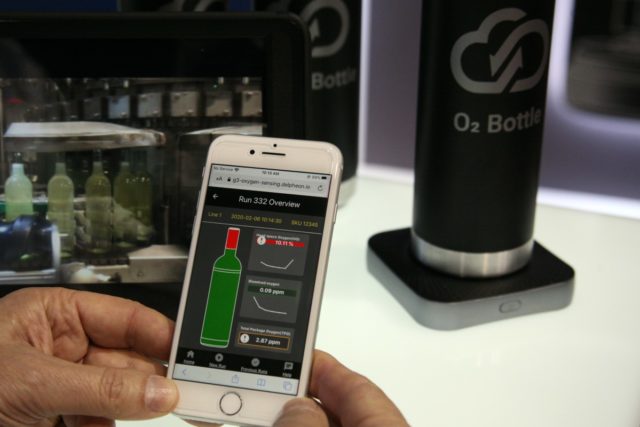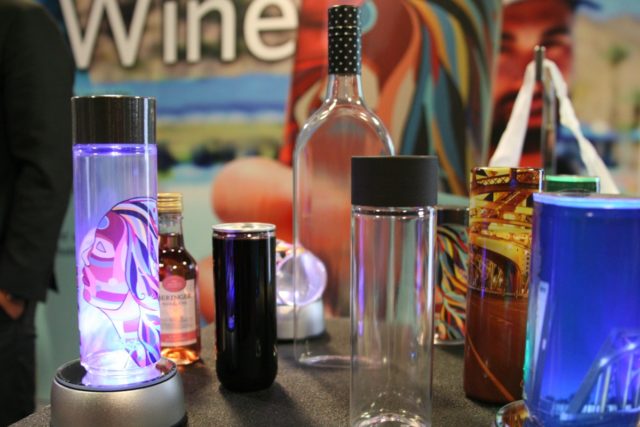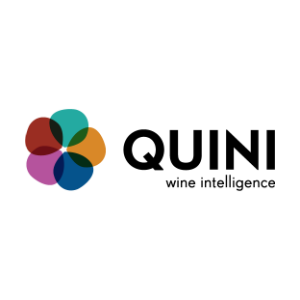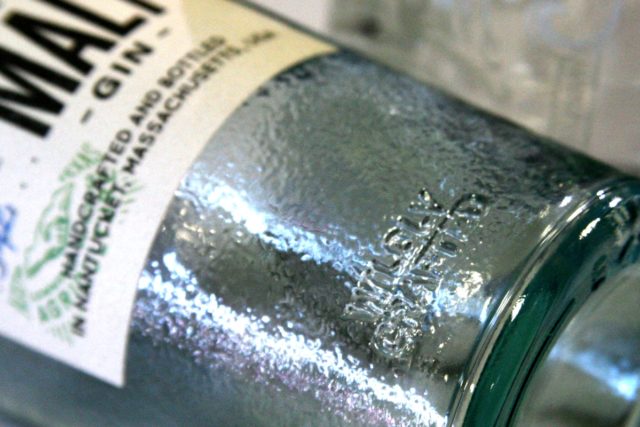ASEV promised that this year’s Unified Wine & Grape Symposium was going to be big, and it was. The trade show stretched across four buildings at the Cal Expo plus an outdoor exhibit area. Even if you went to the symposium and spent both days visiting as many of the seven hundred or so exhibitors as you could, it would be almost impossible to visit everyone, and you may have missed some of these interesting finds from some of the wine industry’s most innovative suppliers.
OenoFoss Go
Foss used the symposium to introduce their OenoFoss Go to the American market. This small analyzer is built with Foss quality and expertise, but is designed to be accessible to smaller producers and empower them to be less reliant on sending samples to external laboratories. By limiting the testing parameters of the OenoFoss Go to only the most essential for winemaking decisions, Foss believes they can deliver a high value analyzer at an affordable price point that will pay off for the small producer. The analyzer will allow small producers to get information faster and more frequently on both finished wine and must, which will in turn enable them to make better decisions and a better end product. The OenoFoss Go is distributed in the United States by Gusmer Enterprises.
RoboBottle
G3 Enterprises have extended their ingenious RoboBottle technology and are now offering them as a service to G3 customers. The RoboBottle technology is designed to optimize the performance of bottling lines by streamlining setup and quickly discovering problems. There are three RoboBottles, Setup bottle assists mechanics in setting up their capper heads accurately and efficiently, helping to guarantee the cappers function at peak performance. The Line bottle monitors the performance of the bottling line to instantly address issues with capper heads. And the Oxygen bottle, which is currently still in beta-testing, provides information on oxygen management and, if necessary, where to focus improvement efforts. All of this information feeds directly into a cloud-based server which analyses and translates the actionable data through the Bottguide app dashboards, so a line’s performance is monitored remotely. This technology promises immediate actionable benefits, and the possibility of further analysis of the data to reveal yet unknown correlations that can lead to more performance enhancing features in the future.

Modern PET Bottle Concepts
Alternative packaging is on the rise with wine consumers who are looking for something that’s convenient, sustainable and a fresh design that goes beyond the traditional bottle. Amcor has long offered the single serve PET containers with the traditional bottle shape, but has expanded their capabilities to accommodate pretty much any shape or form of container that a producer might want for their beverage. Square, cubic, cylindrical, round, flat, or flower shaped; it can be done, and there are good reasons to consider doing it.
In addition to being able to present your product in a package that appeals to especially younger consumers in a novel way, PET bottles are fully recyclable, have a low carbon footprint, and are lightweight. The interior of the bottles are coated with a glass based lining, so the wine is not in contact with the plastic, and they can accommodate acidic as well as sparkling wines.

Integrated Consumer Sensory and Retail Data Analytics
Quini sponsored the regional wine tasting at Unified which offered tasters the opportunity to try the tasting and rating app that Quini uses to gather and analyze consumer sensory data for their winery clients. They also announced their partnership with Nielsen, which means that clients can now cross tabulate consumer sensory data with sales data in near real time. This integration of diverse data offers the possibility of discovering competitive advantages of wines or perhaps why they are failing in the market compared to competing brands.
 The amount of insights that can be gleaned is truly astonishing, and the Quini team has made it easy to search for data correlations in their user friendly dashboard setups, so that you don’t have to be a data expert to use them. As an example, you might compare your wine to a competitor in the market that’s doing better and find that consumers who tasted both liked your wine better, which should tell you that there’s a marketing rather than a wine quality problem. Another analysis might reveal that consumers like the competing wine better, and when you dive deeper into the sensory data it might show that it is primarily the color or mouthfeel that consumers prefer, and that feedback is invaluable to the winemaking team.
The amount of insights that can be gleaned is truly astonishing, and the Quini team has made it easy to search for data correlations in their user friendly dashboard setups, so that you don’t have to be a data expert to use them. As an example, you might compare your wine to a competitor in the market that’s doing better and find that consumers who tasted both liked your wine better, which should tell you that there’s a marketing rather than a wine quality problem. Another analysis might reveal that consumers like the competing wine better, and when you dive deeper into the sensory data it might show that it is primarily the color or mouthfeel that consumers prefer, and that feedback is invaluable to the winemaking team.
Wildly Crafted Glass
The nice thing about glass is that it’s 100% recyclable. However, that doesn’t mean that all glass is recycled, and it doesn’t mean that the glass you buy is recycled glass, unless you buy Wildly Crafted bottles, which is made with up to 100% recycled glass. The Wildly Crafted line of bottles by Quest are not just made from recycled glass, they are designed to embody and embrace a culture of craft and sustainability. Their raw natural texture welcomes tints and imperfections by making them part of the package design and brand story. These bottles have a unique and authentic feel that should resonate well with many small batch craft producers and their consumers to whom sustainability and recycling are core values. The bottles are available in small orders. In fact, they are only available in small orders because of the supply chain constraints of using recycled glass. Yet, they are also affordable with a price per bottle suitable for wines retailing $15 or more.

By Kim Badenfort


















